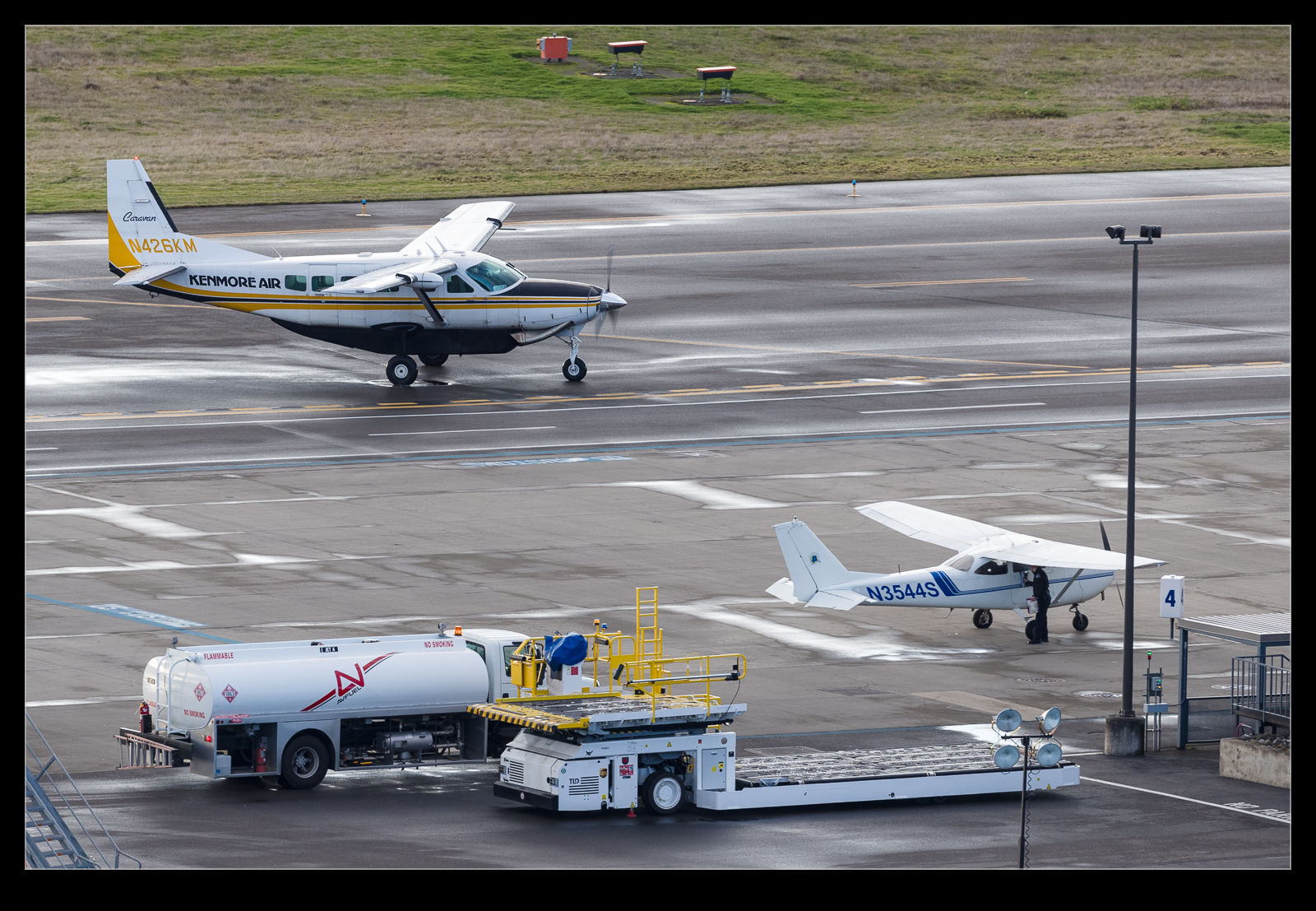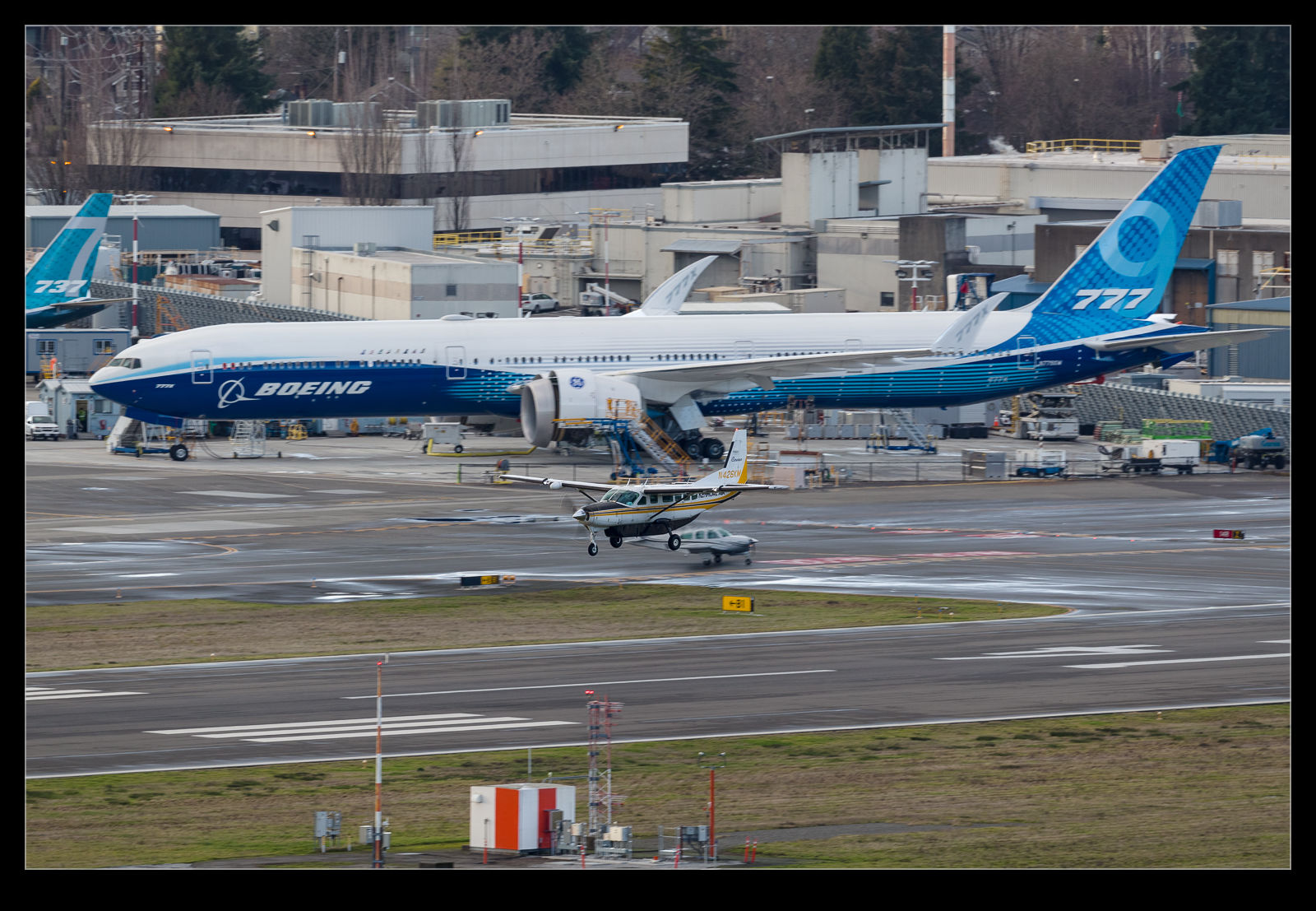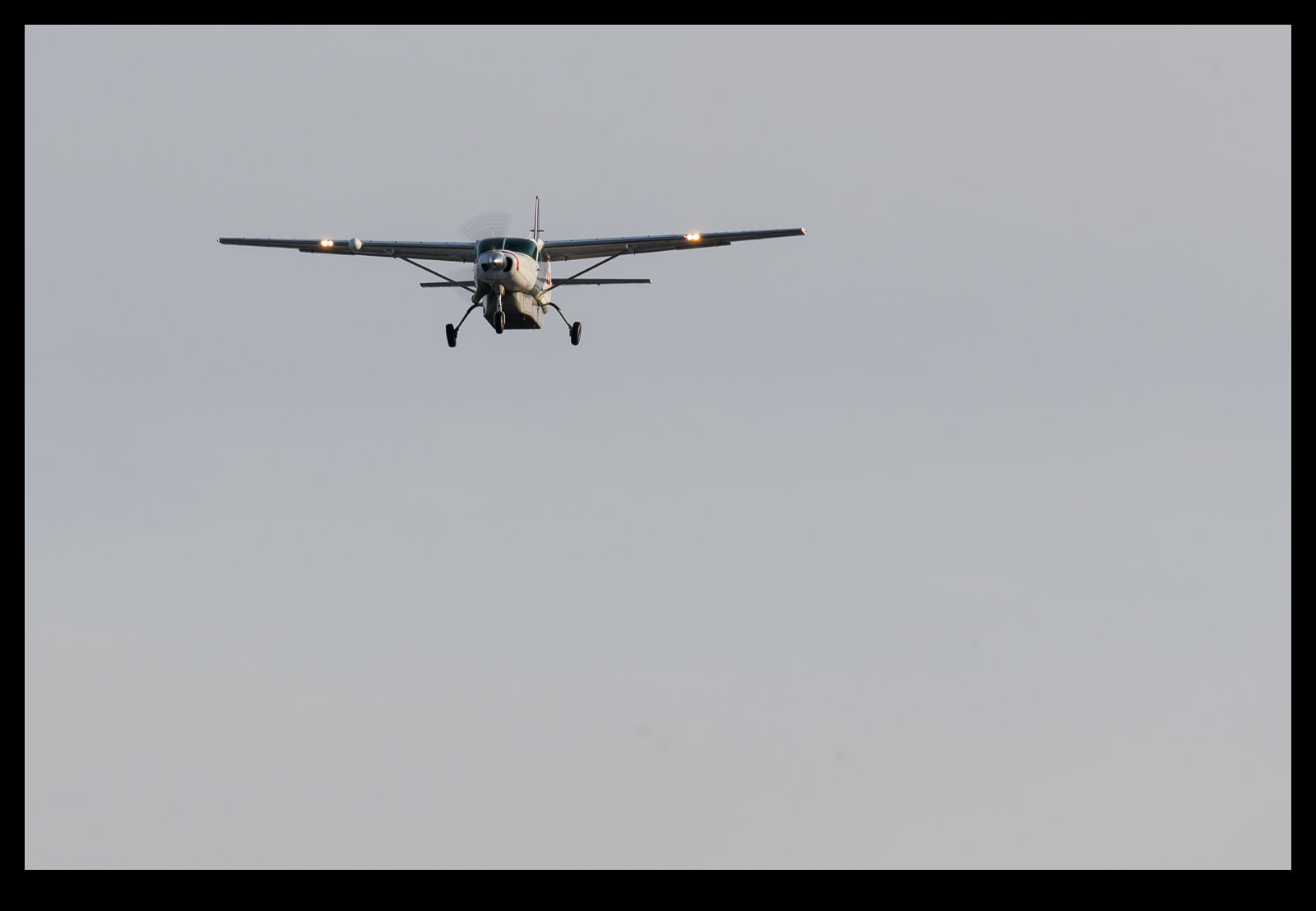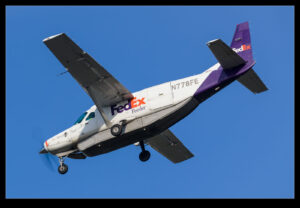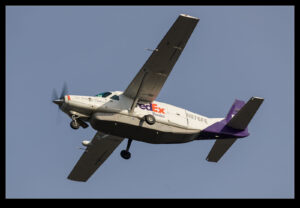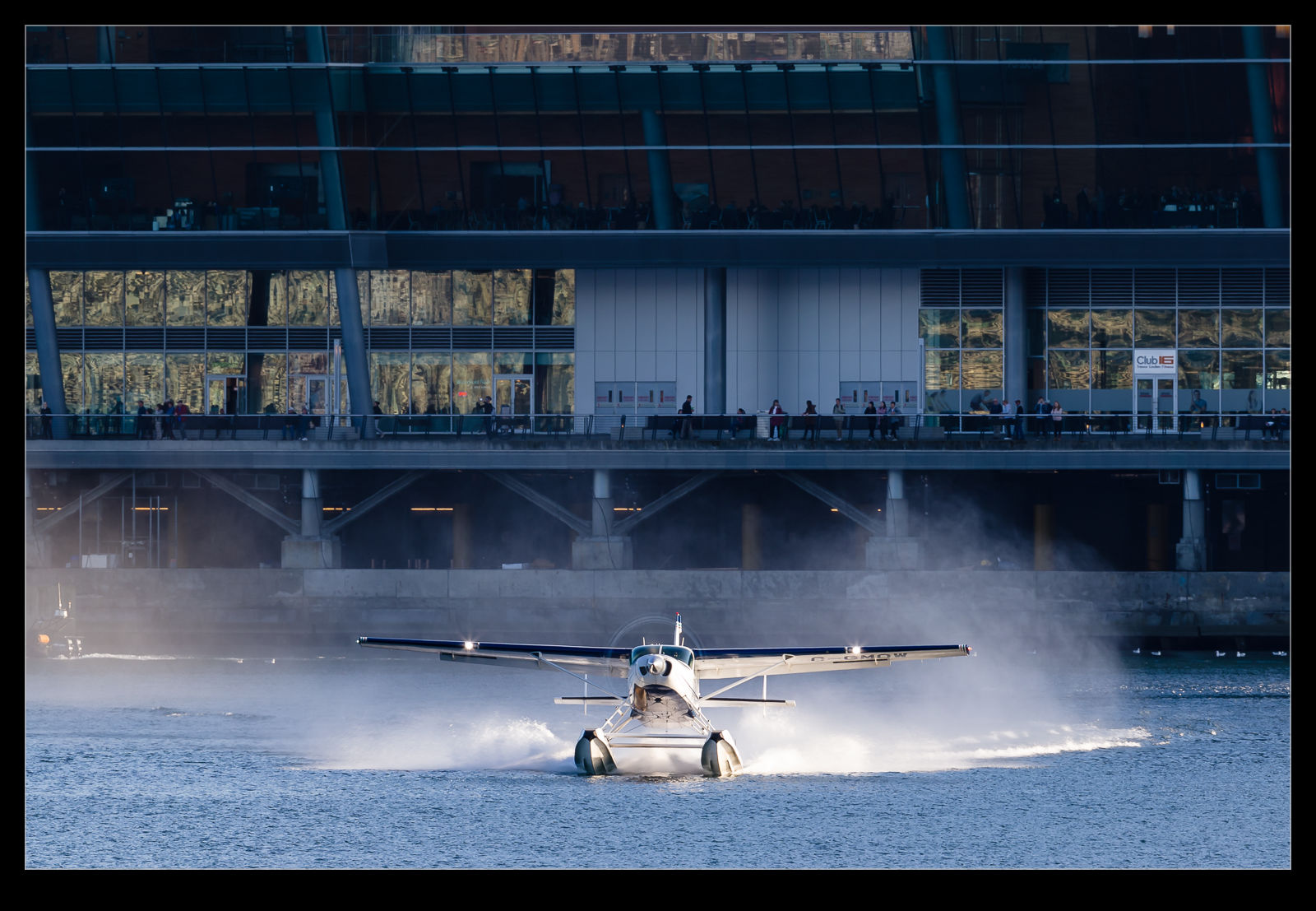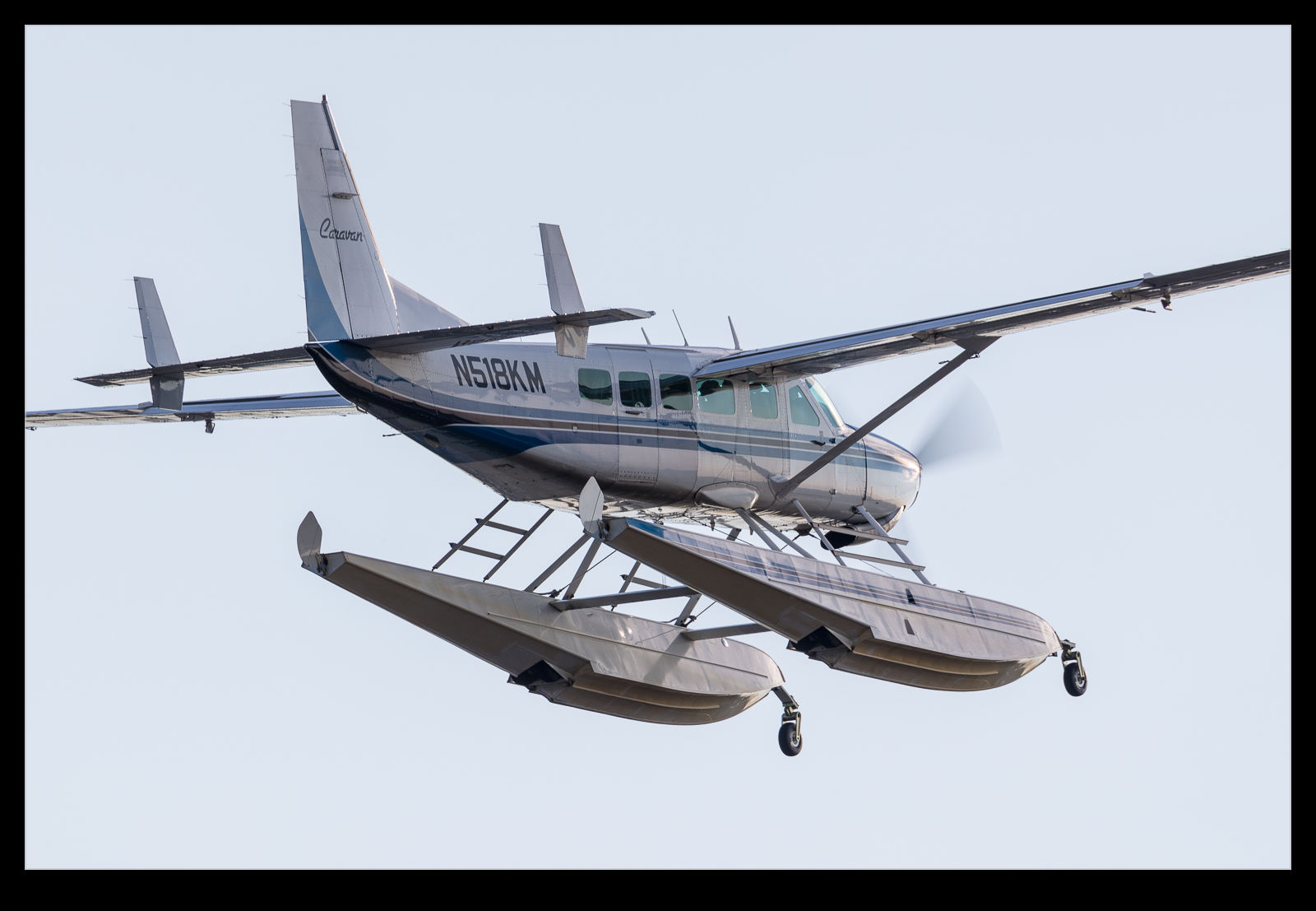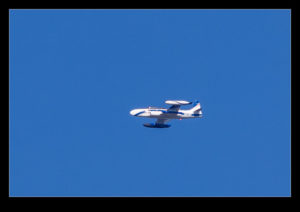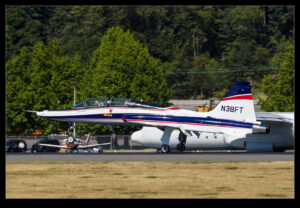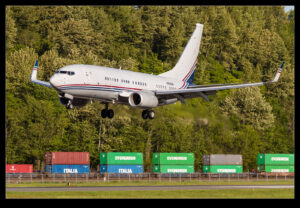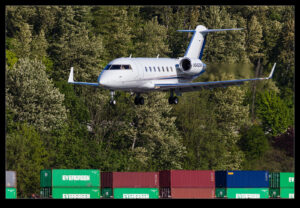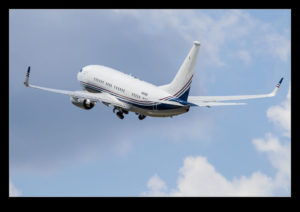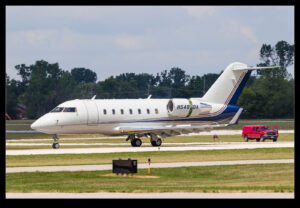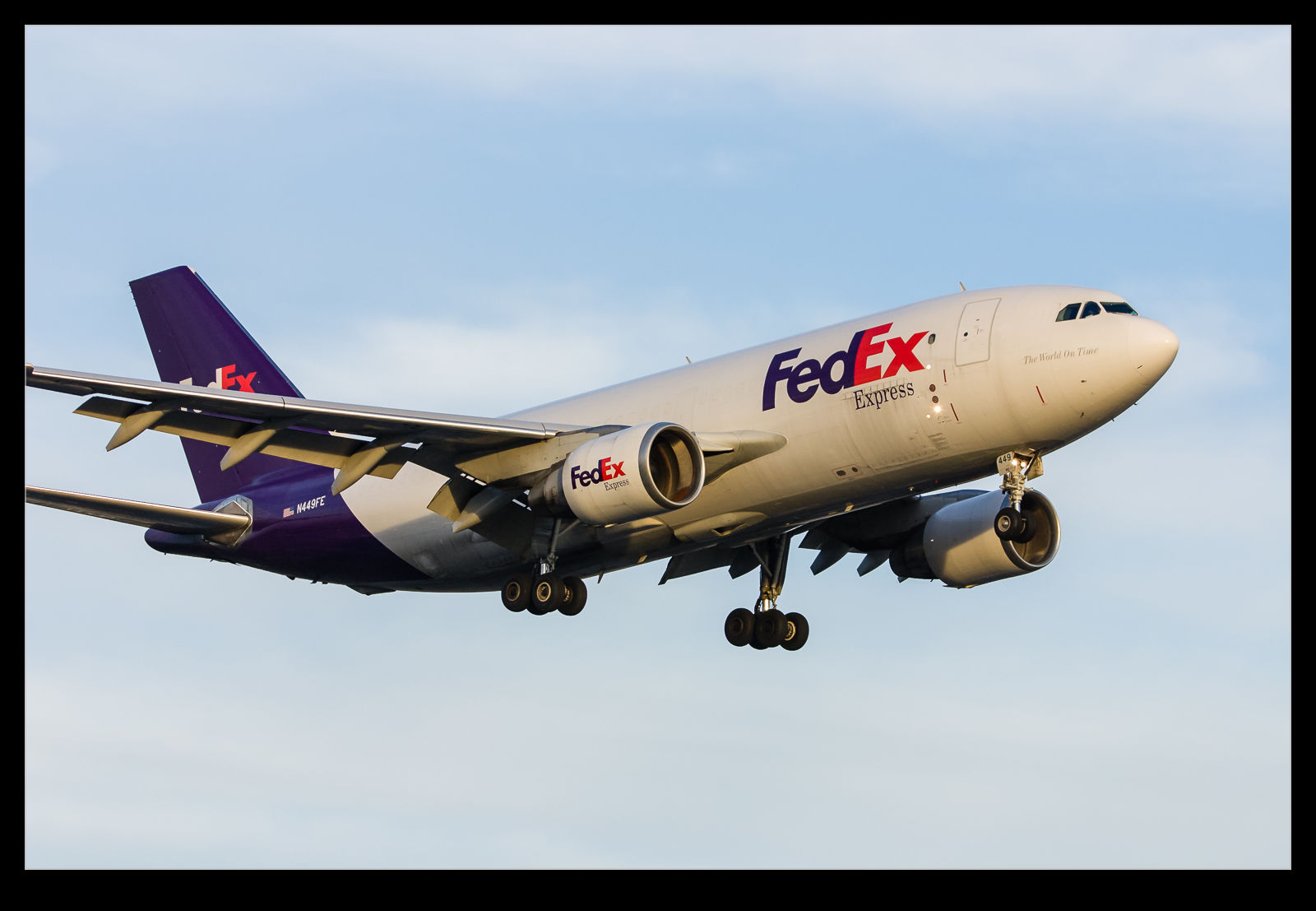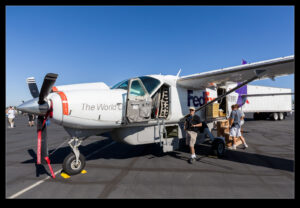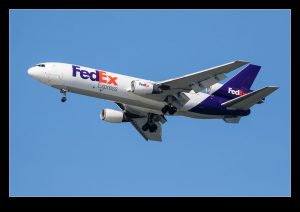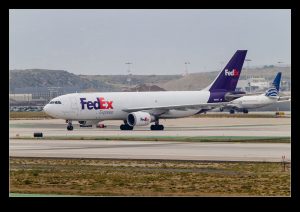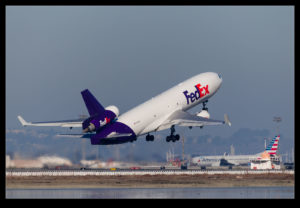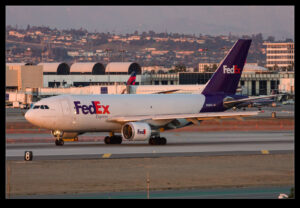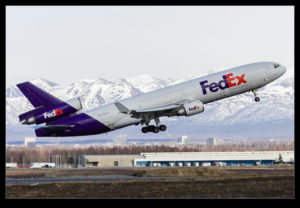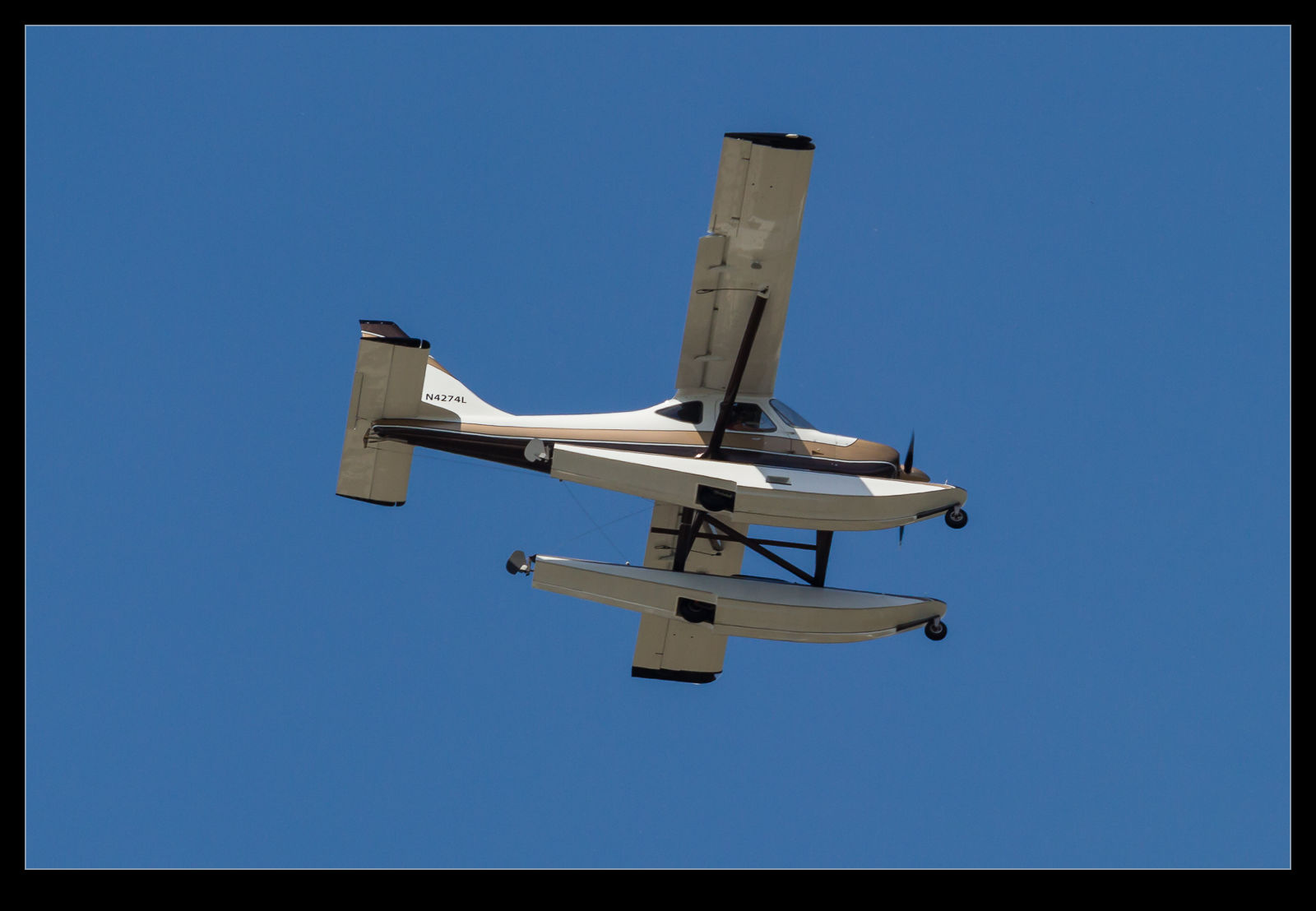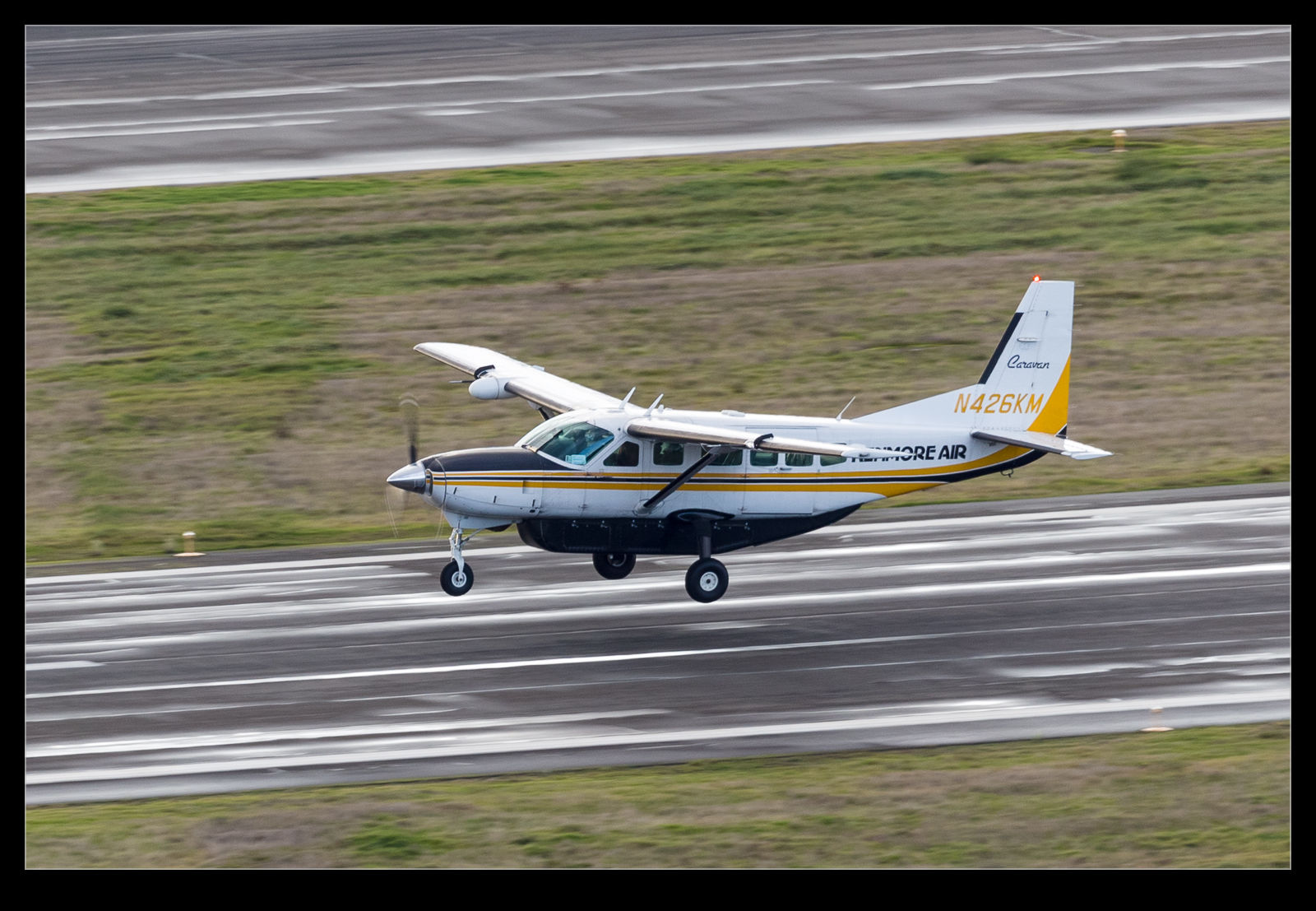 Kenmore’s floatplane operations are the best known part of their business but they have a lot of flights using the Cessna Caravan from land bases. One of them returned to their Boeing Field base while I was there. The Caravan is perfectly capable of using the short runway at the airport and, with plenty of traffic using the main runway, this one came in on the short side. That brought it closer to me so I was pretty happy about it.
Kenmore’s floatplane operations are the best known part of their business but they have a lot of flights using the Cessna Caravan from land bases. One of them returned to their Boeing Field base while I was there. The Caravan is perfectly capable of using the short runway at the airport and, with plenty of traffic using the main runway, this one came in on the short side. That brought it closer to me so I was pretty happy about it.
Tag Archives: caravan
FedEx Caravans
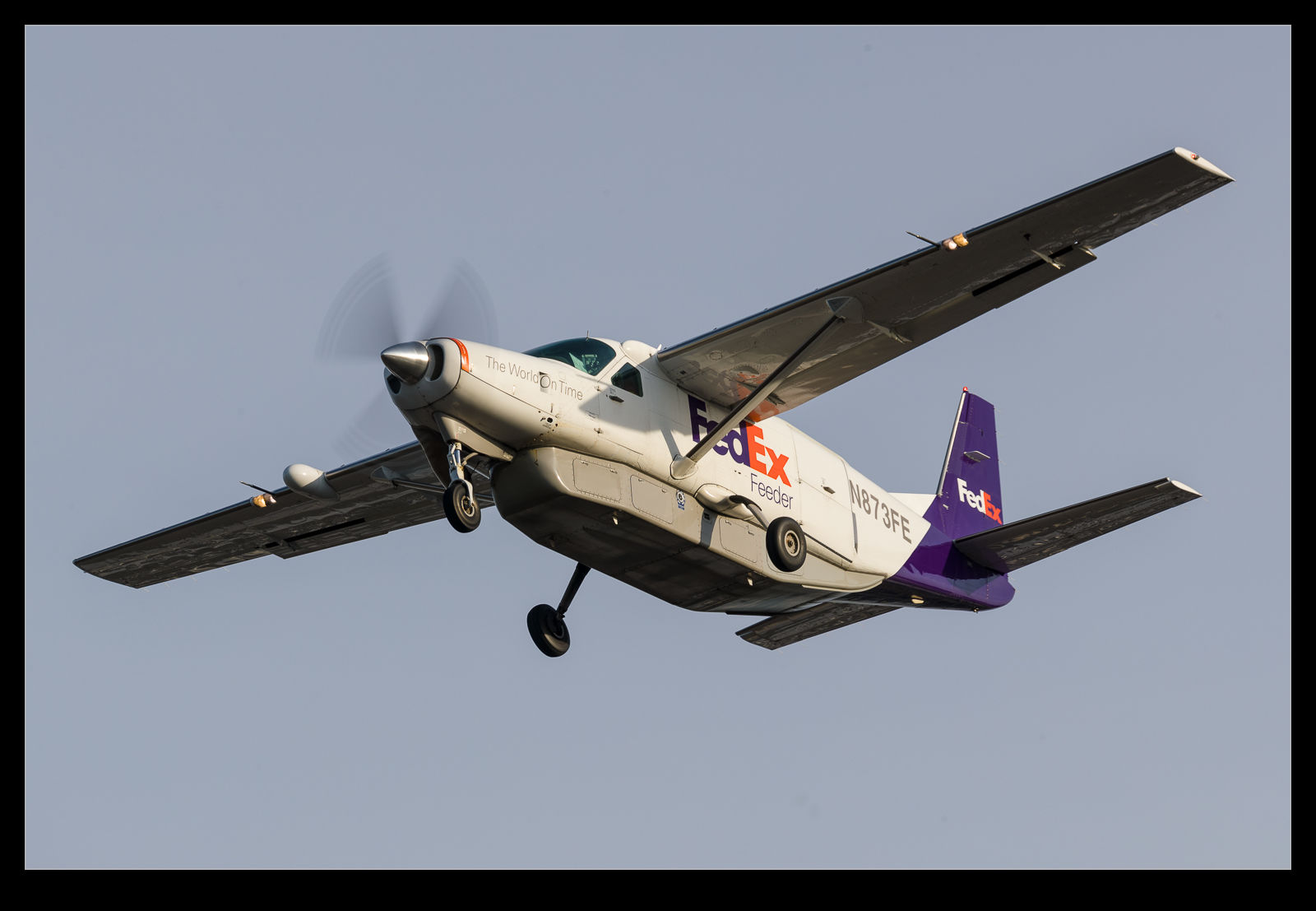 The FedEx freighter fleet is extensive and includes a variety of jets. However, the feed of packages to those big jets is partly the role of a bunch of less glamorous types, a significant one of which is the Cessna Caravan. These planes shuttle cargo from out stations to the larger airports and then distribute packages back out to those same stations. It’s not the most exciting flying in the world but it is a valuable job. Here are a few Caravans from FedEx’s fleet that I have seen (relatively) recently. The Cessna Skycourier made its first flight recently and it is intended to replace these guys in the coming years.
The FedEx freighter fleet is extensive and includes a variety of jets. However, the feed of packages to those big jets is partly the role of a bunch of less glamorous types, a significant one of which is the Cessna Caravan. These planes shuttle cargo from out stations to the larger airports and then distribute packages back out to those same stations. It’s not the most exciting flying in the world but it is a valuable job. Here are a few Caravans from FedEx’s fleet that I have seen (relatively) recently. The Cessna Skycourier made its first flight recently and it is intended to replace these guys in the coming years.
The Caravans on Floats Come Close
 The Caravan’s of Seair seemed to delight in making their departures closer to Stanley Park than the Harbour Air flights. This meant the long lens was way too much at their closest point but it did provide some nice angles for the aircraft as they took off and climbed out. The Caravan looks rather uncomfortable when on floats on the water but, once it is airborne, it looks pretty good to me. I was quite pleased with these passes.
The Caravan’s of Seair seemed to delight in making their departures closer to Stanley Park than the Harbour Air flights. This meant the long lens was way too much at their closest point but it did provide some nice angles for the aircraft as they took off and climbed out. The Caravan looks rather uncomfortable when on floats on the water but, once it is airborne, it looks pretty good to me. I was quite pleased with these passes.
A Caravan on Floats (Despite My Previous Comments)
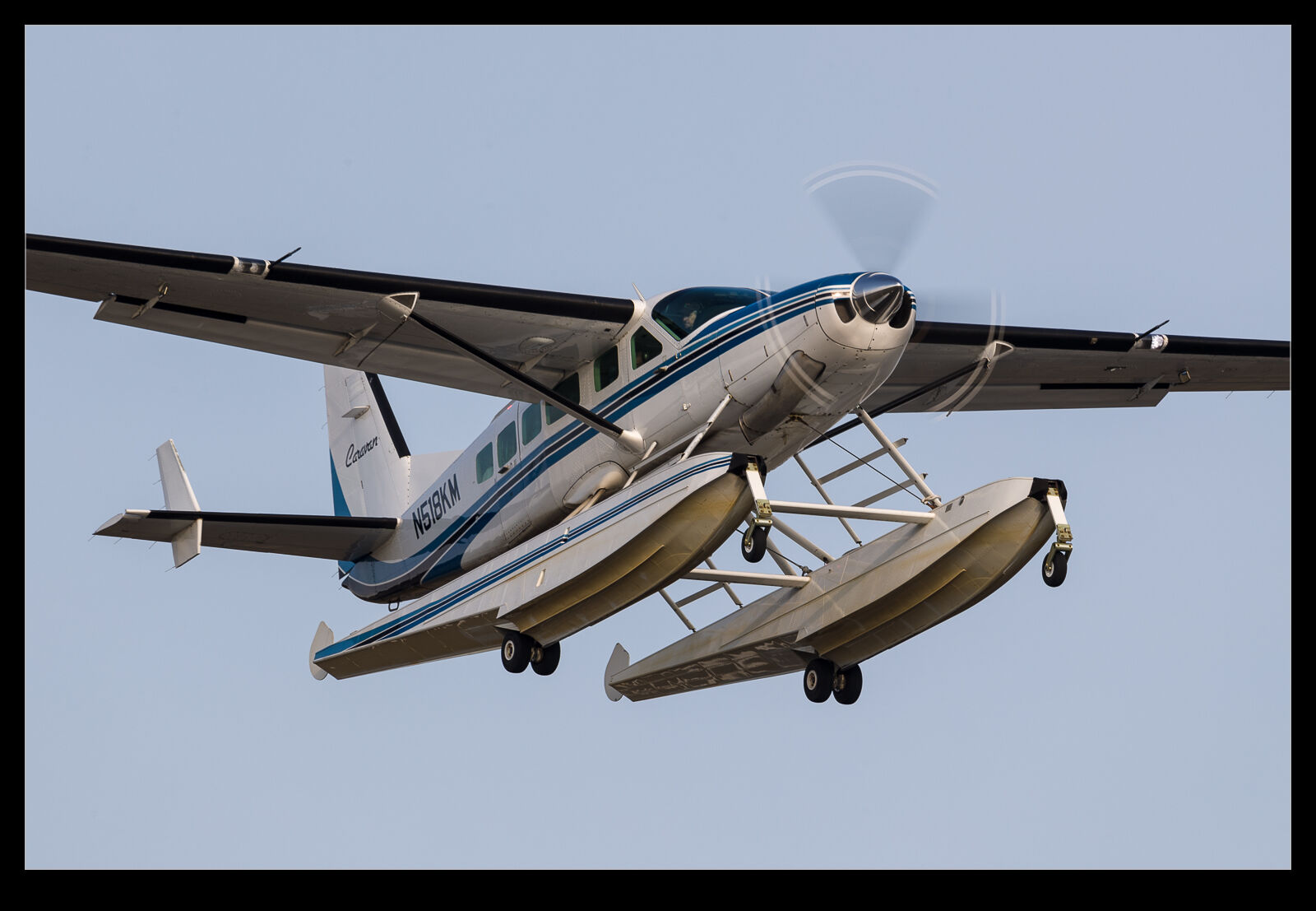 When I watched a Cessna Caravan on floats landing in Vancouver Harbour, I was rather critical of its water handling characteristics. It wallowed horribly and didn’t look like it was supposed to be there at all. However, the Caravan is not a bad plane and it is quite a rugged workhorse so I don’t have a gripe with it per se. Another float equipped example took off from Paine Field while I was awaiting something else and the combination of the afternoon light and the closeness to the plane meant I was rather pleased with the shots that were possible.
When I watched a Cessna Caravan on floats landing in Vancouver Harbour, I was rather critical of its water handling characteristics. It wallowed horribly and didn’t look like it was supposed to be there at all. However, the Caravan is not a bad plane and it is quite a rugged workhorse so I don’t have a gripe with it per se. Another float equipped example took off from Paine Field while I was awaiting something else and the combination of the afternoon light and the closeness to the plane meant I was rather pleased with the shots that were possible.
Boeing’s Fleet of Runabouts
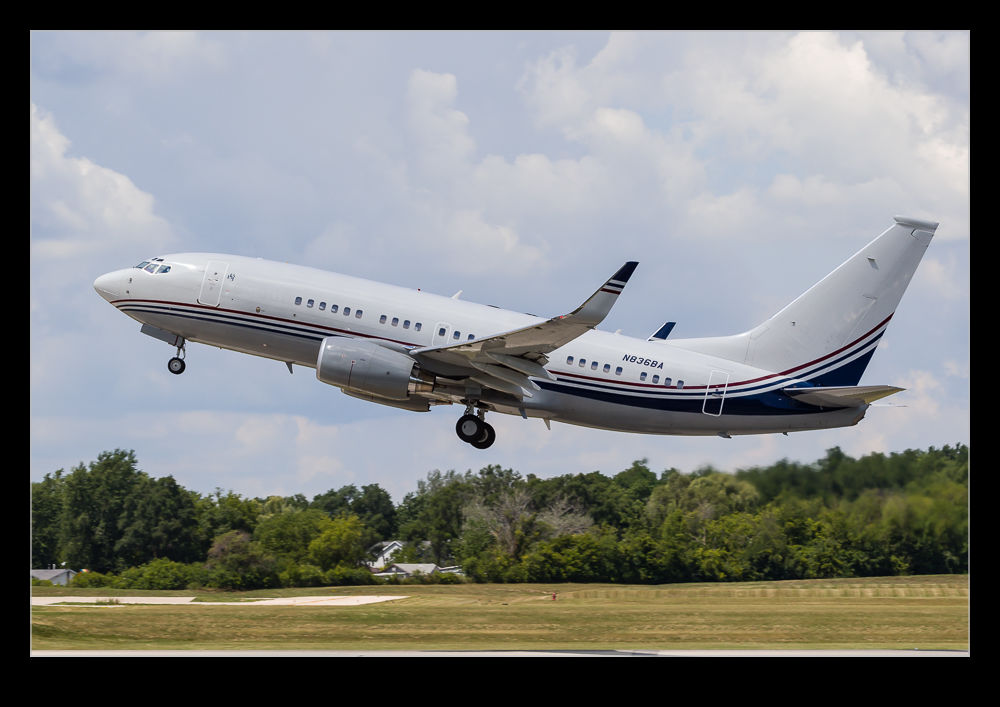 While the big jets are what Boeing is known for, they have a number of other aircraft that they use for their own purposes. I haven’t got all of these by any stretch of the imagination but I have come across a few at various times. They have BBJs that they use for executive transport. They also have some Bombardier Challengers that are able to promptly get people from A to B.
While the big jets are what Boeing is known for, they have a number of other aircraft that they use for their own purposes. I haven’t got all of these by any stretch of the imagination but I have come across a few at various times. They have BBJs that they use for executive transport. They also have some Bombardier Challengers that are able to promptly get people from A to B.
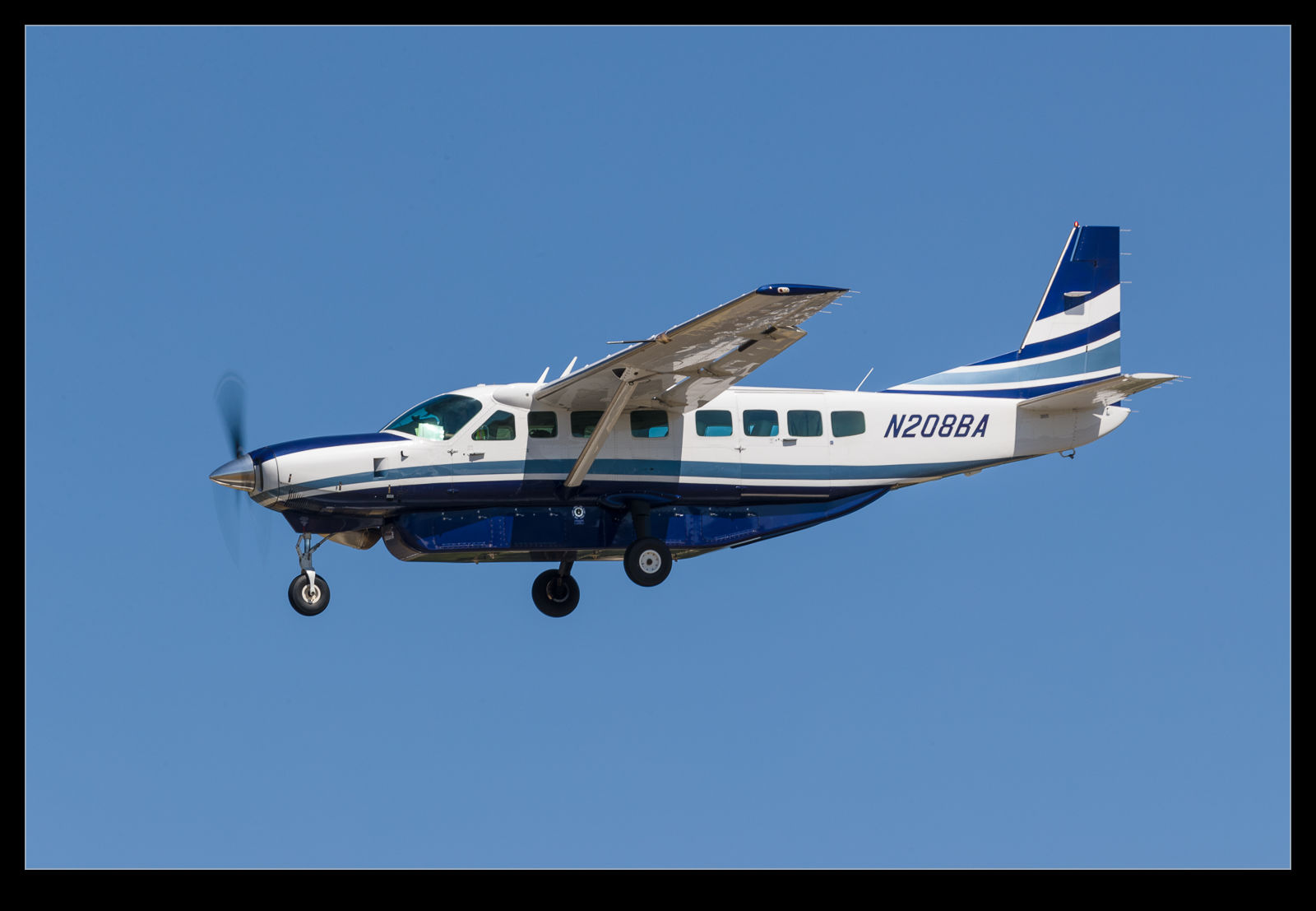 If you are looking a bit more locally, there is at least one Cessna Caravan that is used for various duties. I am not sure what its role is exactly but I imagine it is a handy way of getting people around the northwest and it can probably also move parts up to a certain size if needed.
If you are looking a bit more locally, there is at least one Cessna Caravan that is used for various duties. I am not sure what its role is exactly but I imagine it is a handy way of getting people around the northwest and it can probably also move parts up to a certain size if needed.
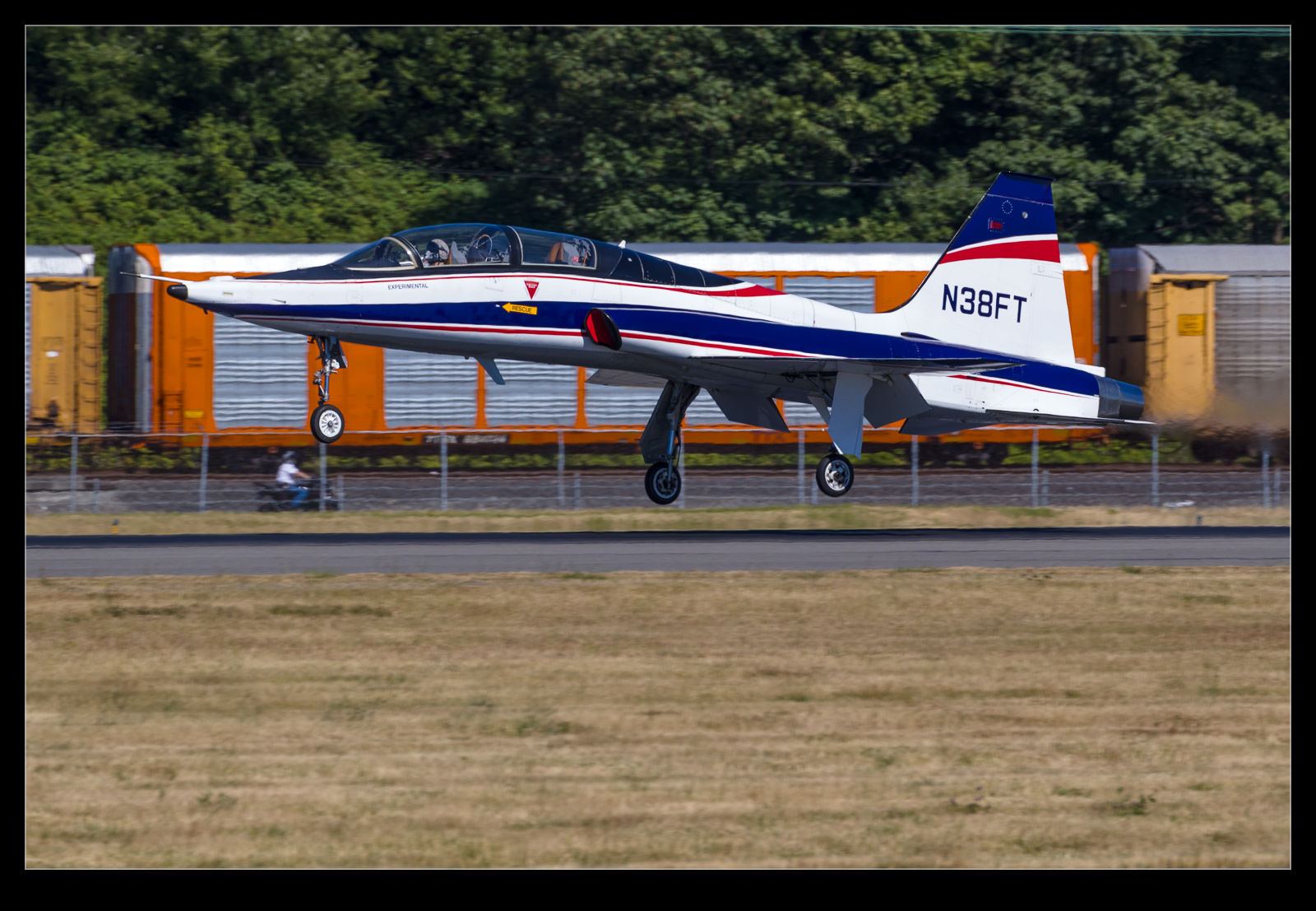 Another runabout is a Northrop T-38. This can be used for chase duties but I also suspect it is a crew hack since it seems to make regular runs between BFI and Moses Lake without crossing paths with any of the test aircraft. There are also T-33s used for chase work but, sadly, I have get close to any in action. Just a distant overflight shot. Hopefully I will see them before too long.
Another runabout is a Northrop T-38. This can be used for chase duties but I also suspect it is a crew hack since it seems to make regular runs between BFI and Moses Lake without crossing paths with any of the test aircraft. There are also T-33s used for chase work but, sadly, I have get close to any in action. Just a distant overflight shot. Hopefully I will see them before too long.
FedEx Fleet Types
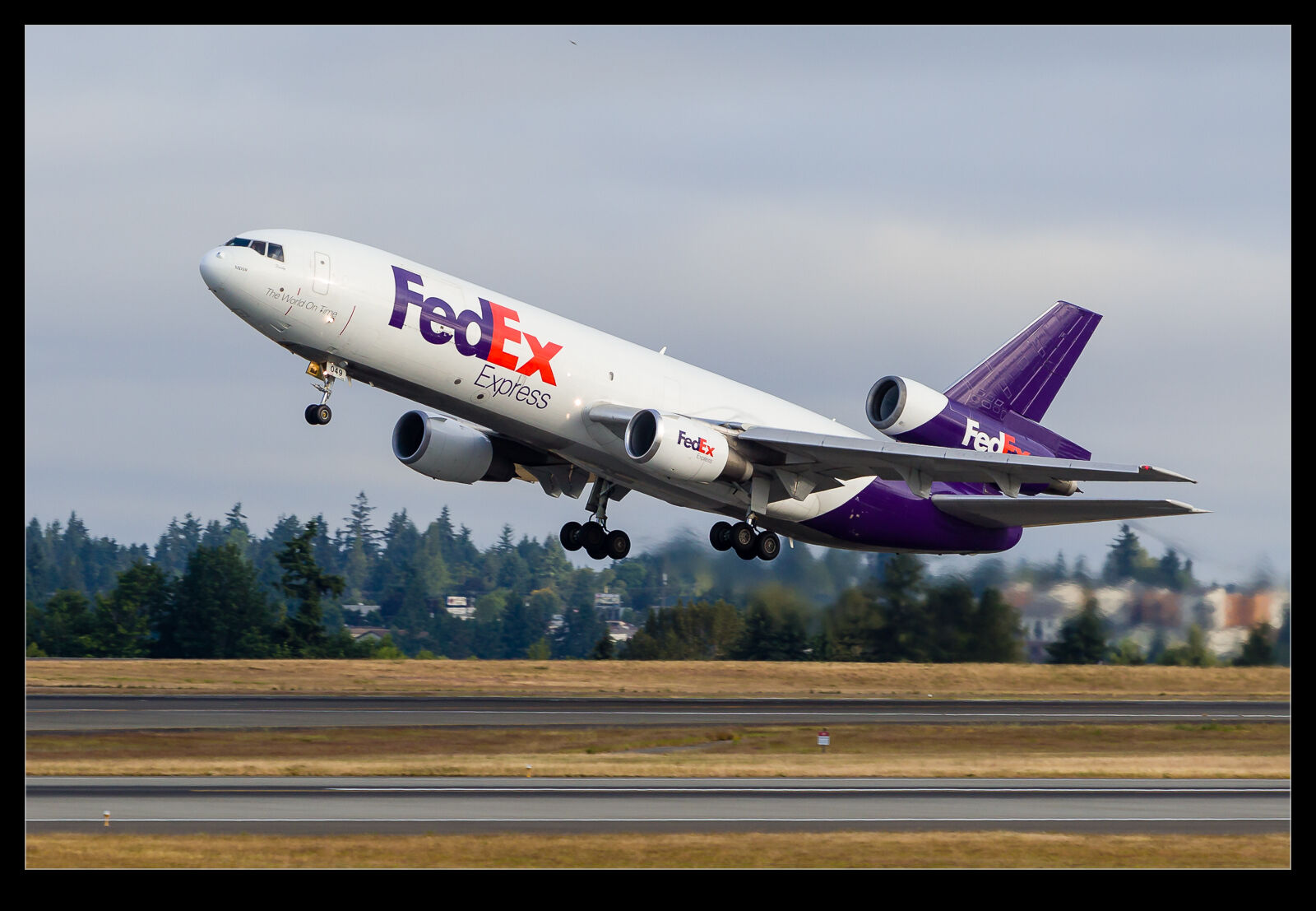 Flipping through various shoots looking for something else, I happened to come across a few shots of aircraft from the FedEx fleet. It occurred to me that I could drag together a post that was focused purely on the FedEx aircraft types. FedEx has an extensive fleet of aircraft these days. Their early days of using Falcon 20s to move their packages around are long gone. Now they have a variety of aircraft types of different sizes and range to meet all of their needs.
Flipping through various shoots looking for something else, I happened to come across a few shots of aircraft from the FedEx fleet. It occurred to me that I could drag together a post that was focused purely on the FedEx aircraft types. FedEx has an extensive fleet of aircraft these days. Their early days of using Falcon 20s to move their packages around are long gone. Now they have a variety of aircraft types of different sizes and range to meet all of their needs.
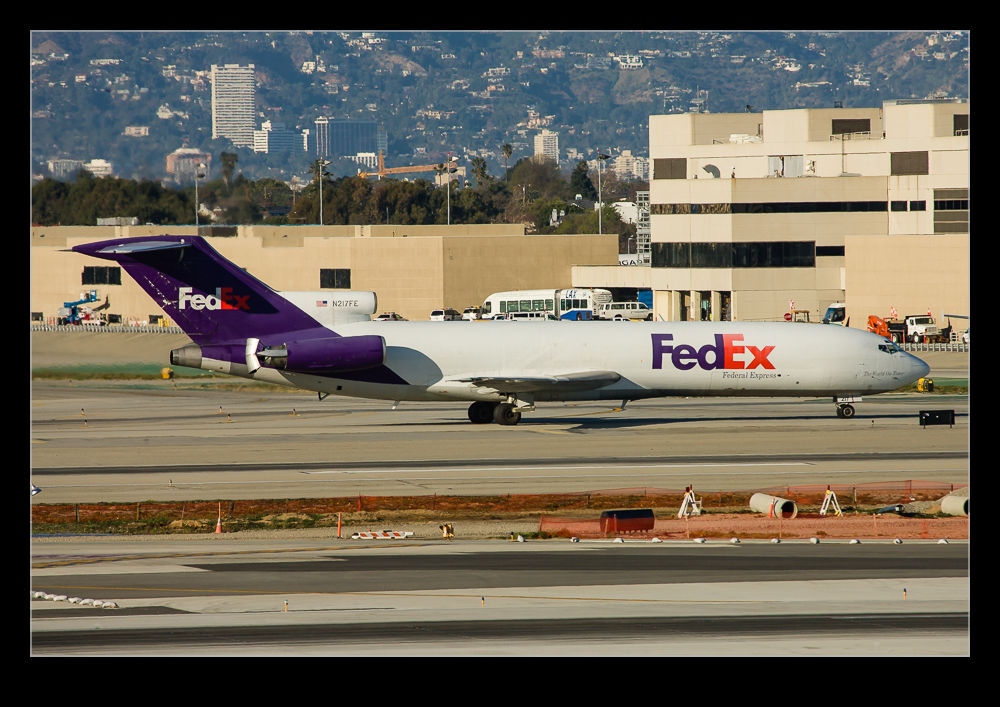 The fleet is constantly in a state of regeneration. The types that have long been a part of FedEx operations are now going or gone and being replaced with something more up to date. The 727 fleet has gone. The A300s and A310s are still in use but the number in the fleet is gradually going down. The interesting thing about the FedEx fleet is the way the economics are changing. For a long time, second hand jets that had been retired from airline service made a lot of sense. The operating model involves a lot of jets flying from their home base to Memphis in the middle of the night to deliver packages to the hub. Then, after a quick turnaround of all of the sorted packages, the planes fly back to base. Then they sit on the ground for most of the day.
The fleet is constantly in a state of regeneration. The types that have long been a part of FedEx operations are now going or gone and being replaced with something more up to date. The 727 fleet has gone. The A300s and A310s are still in use but the number in the fleet is gradually going down. The interesting thing about the FedEx fleet is the way the economics are changing. For a long time, second hand jets that had been retired from airline service made a lot of sense. The operating model involves a lot of jets flying from their home base to Memphis in the middle of the night to deliver packages to the hub. Then, after a quick turnaround of all of the sorted packages, the planes fly back to base. Then they sit on the ground for most of the day.
 This model means that utilization for the aircraft is low. Having a less efficient jet is not a problem when it only flies a few hours each day. If it is cheap to buy, you can use it efficiently. Having a bunch of inefficient 727s works very well. Similarly, the smaller aircraft that feed into hubs also can be operated relatively cheaply. A fleet of Cessna Caravans that sit on the ground or a bunch of ATR42s is effective.
This model means that utilization for the aircraft is low. Having a less efficient jet is not a problem when it only flies a few hours each day. If it is cheap to buy, you can use it efficiently. Having a bunch of inefficient 727s works very well. Similarly, the smaller aircraft that feed into hubs also can be operated relatively cheaply. A fleet of Cessna Caravans that sit on the ground or a bunch of ATR42s is effective.
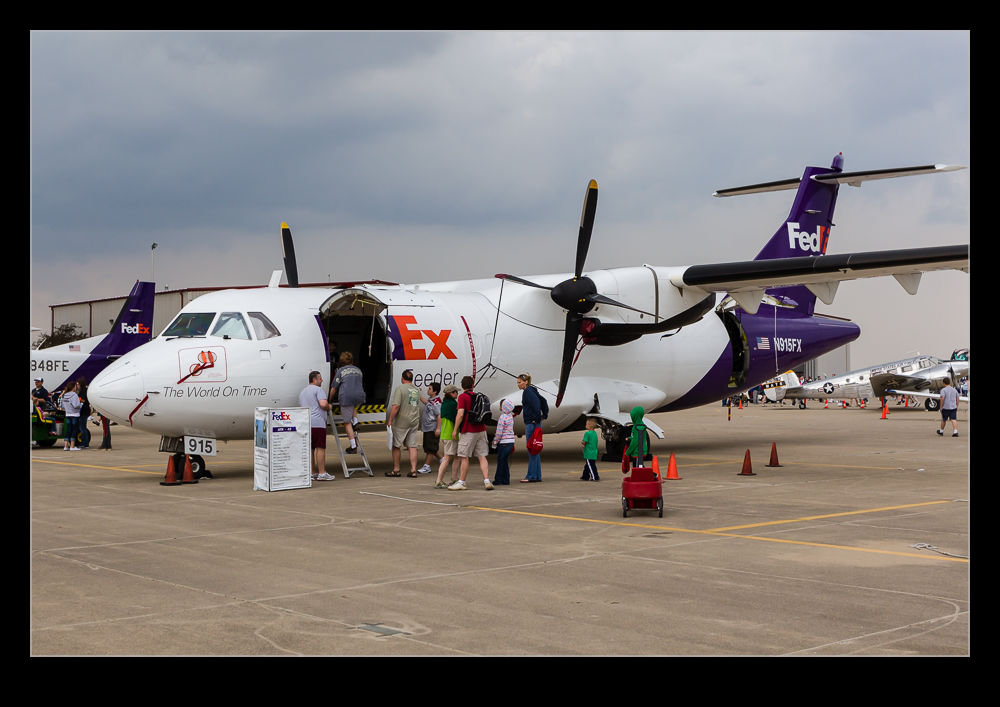 The 727s are gone now. They have been replaced with 757s which have all been retired by airline operators (a lot of them from British Airways).The big change is that new jets are being acquired. The operating economics for FedEx have changed. The DC-10s (which got upgraded to MD-10s) are gradually being replaced by new 767s. Meanwhile, the MD-11s which had previously been the kings of the long haul flights are now being relegated to domestic service while the 777F takes over the long haul missions. Direct from Memphis to China is now the norm for the 777F. You don’t see MD-11s crossing the Pacific as much any more. I think the Europe runs are limited too. The 777 can go direct with a decent payload and doesn’t need to stop for fuel in Anchorage.
The 727s are gone now. They have been replaced with 757s which have all been retired by airline operators (a lot of them from British Airways).The big change is that new jets are being acquired. The operating economics for FedEx have changed. The DC-10s (which got upgraded to MD-10s) are gradually being replaced by new 767s. Meanwhile, the MD-11s which had previously been the kings of the long haul flights are now being relegated to domestic service while the 777F takes over the long haul missions. Direct from Memphis to China is now the norm for the 777F. You don’t see MD-11s crossing the Pacific as much any more. I think the Europe runs are limited too. The 777 can go direct with a decent payload and doesn’t need to stop for fuel in Anchorage.
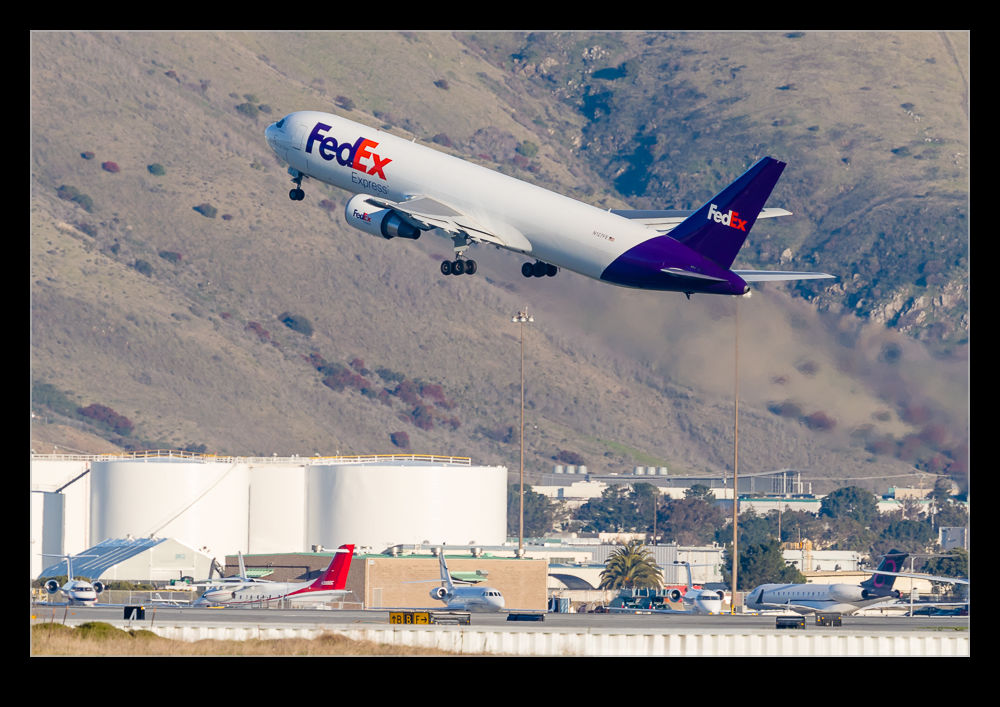 The MD-11 will survive for a while yet. Its less efficient operate will mean it can be pushed onto shorter segments with lower utilization. The high utilization missions will be the preserve of the newer jets. The older jets will be fine on the flights that only involve a couple of trips a day. For these their low capital costs will offset any operational cost penalty. The migration of the fleet will continue though. Soon it will be a fleet with a few less types and things will be a bit less interesting. There will still be a bunch of 727s scattered around airports that had them donated though so keep an eye out for them.
The MD-11 will survive for a while yet. Its less efficient operate will mean it can be pushed onto shorter segments with lower utilization. The high utilization missions will be the preserve of the newer jets. The older jets will be fine on the flights that only involve a couple of trips a day. For these their low capital costs will offset any operational cost penalty. The migration of the fleet will continue though. Soon it will be a fleet with a few less types and things will be a bit less interesting. There will still be a bunch of 727s scattered around airports that had them donated though so keep an eye out for them.
Floatplanes But No Water
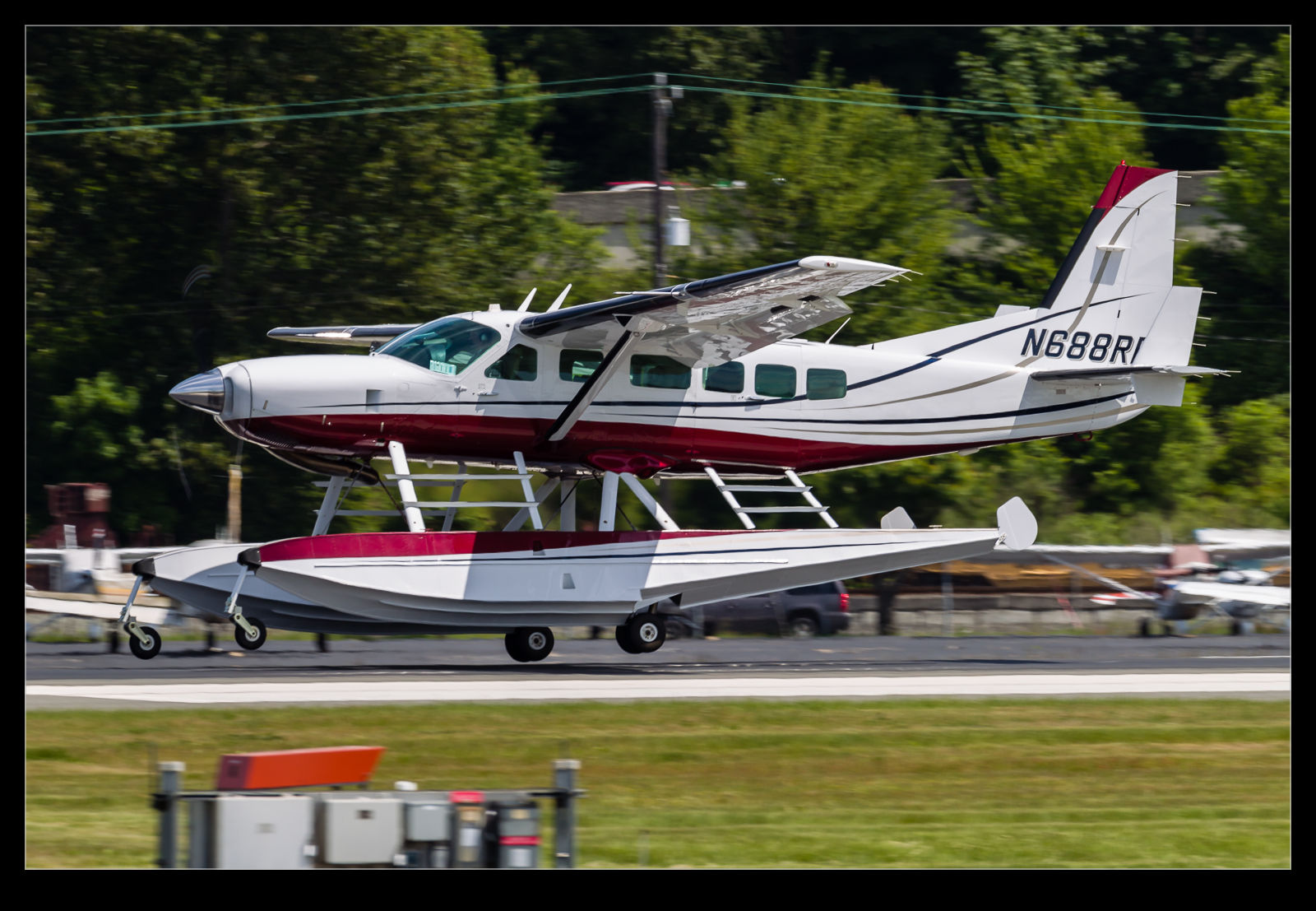 A fun feature of flying in the Pacific Northwest is the abundance of floatplanes and amphibians. The locations that support water based aviation are many so the planes are pretty common. Boeing Field provided me with a couple of examples on one recent visit. One was a Cessna Caravan on amphibious floats that showed up on approach while I was distracted. I almost didn’t get it at all. The other flew overhead but didn’t land. I did get a couple of quick shots as it flew by though. I wonder where it went next.
A fun feature of flying in the Pacific Northwest is the abundance of floatplanes and amphibians. The locations that support water based aviation are many so the planes are pretty common. Boeing Field provided me with a couple of examples on one recent visit. One was a Cessna Caravan on amphibious floats that showed up on approach while I was distracted. I almost didn’t get it at all. The other flew overhead but didn’t land. I did get a couple of quick shots as it flew by though. I wonder where it went next.
